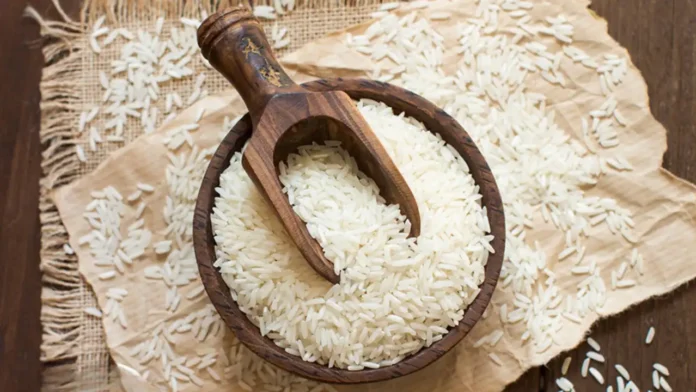The export price of basmati rice has dropped significantly below the govt’s established minimum export price of $950 per tonne, to a range of $800 to $850 per tonne. Despite these reduced prices, there’s a noticeable scarcity of international buyers.
Local prices have also experienced a decline, dropping from INR 75 per kg to INR 65 per kg due to limited export demand. Exporters noted that importing nations rushed to procure significant quantities of basmati rice from India amidst the uncertainty sparked by the government’s fluctuating Minimum Export Price (MEP). Last August, the MEP surged to $1200 per tonne, only to be reduced to $950 per tonne in October, according to two major exporters.
The Punjab Rice Exporters Association has penned a letter to the Agriculture and Processed Food Product Development Authority (APEDA), urging them to investigate the issue to prevent exporters from facing hardships due to the imposition of the Minimum Export Price (MEP). APEDA serves as the primary agency responsible for issuing registrations for basmati export contracts.
Continue Exploring: Govt slashes minimum export price of Basmati Rice by $250 per tonne
“Because the MEP for basmati rice is still up in the air, foreign purchasers have accumulated a sizable stockpile of the grain. Concerns over potential government restrictions on basmati rice exports prompted buyers to accumulate stocks. Additionally, the uncertainty surrounding MEP led them to make substantial purchases from Pakistan, a major basmati producer,” stated Vijay Setia, former president of the All India Rice Exporter Association and a prominent figure in the basmati export industry.
Global Market Dynamics:
Basmati rice is primarily exported from India as it’s not extensively consumed domestically. Typically, India yields approximately 6.5 million tonnes of basmati annually. Out of this, roughly 5 million tonnes are exported, about 0.5 million tonnes are consumed within the country, and the remainder is held over.
“The production of basmati rice surged in the Kharif season of 2024, reaching 8 million tonnes, a 23% increase over Kharif 2023. Export figures stand at approximately 5.25 million tonnes, while domestic consumption ranges between one to 1.25 million tonnes. The surplus has been carried forward into this year,” remarked Setia.
Gautam Miglani, the managing partner of LRNK, a basmati rice exporting firm based in Haryana and established for 50 years, expressed, “Basmati production is poised to improve in the Kharif season of 2025, given the expected normal monsoon. Farmers are actively purchasing seeds for sowing. However, if the government maintains the status quo on MEP, it could adversely impact the basmati trade, allowing our main competitor, Pakistan, to maintain an advantage in the global market. Already, domestic rice prices have declined by 10-15%, and further decreases may ensue.”
Coincidentally, following a three-year absence, La Niña is forecasted to make a robust return to the Indian coast around August-September, as per the IMD prediction. La Niña, known for cooler-than-average sea surface temperatures in the central and eastern equatorial Pacific Ocean, is renowned for triggering substantial rainfall across India.
Continue Exploring: Indian tea and basmati rice exporters halt shipments to Iran and Middle East amid escalating geopolitical tensions
Miglani noted that a favorable monsoon would yield an exceptional basmati harvest. “Prices are expected to decline due to the significant carry-over inventories and the extraordinary output of basmati rice. Both exporters and farmers will bear the brunt if the government persists with the fixed MEP of $950 per tonne. The prospects for price recovery in the crop will be adversely affected.”
Approximately 75% of India’s yearly precipitation occurs within the brief four-month span of the monsoon season.





